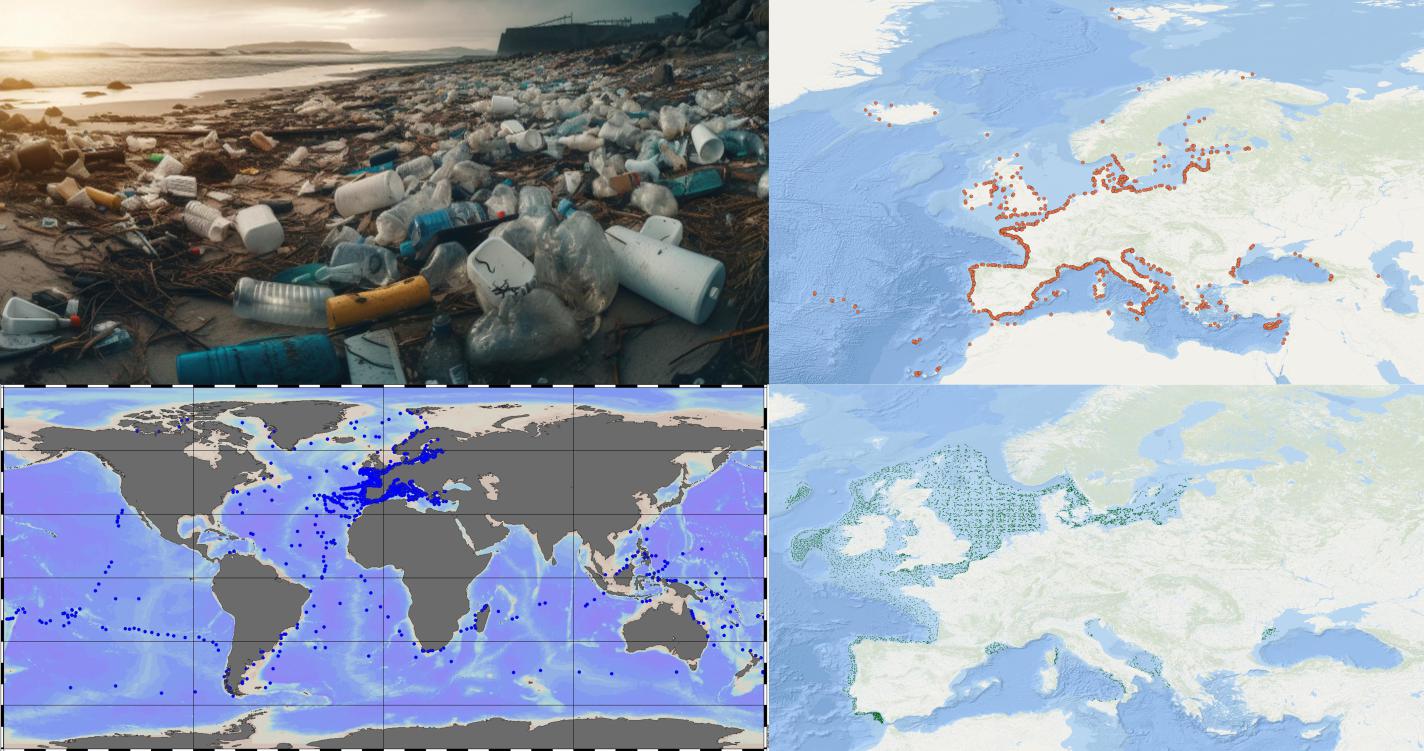New marine litter data collections now accessible via the EMODnet Products Catalogue

EMODnet Chemistry has recently made available online the new aggregated, harmonised and validated collections of unrestricted marine litter data. In particular, three collections have been published in the EMODnet Products catalogue containing high quality data for floating micro-litter, seafloor litter and beach litter.
The data on floating micro-litter are formatted according to the guidelines and formats for the collection and management of micro-litter datasets records at European level, which are accessible through this Digital Object Identifier .
After a central harvesting, the resulting data files are aggregated by the Istituto Nazionale di Oceanografia e di Geofisica Sperimentale - OGS. The variables are described with common vocabularies and the values of the categories for the parameters are unified. The data provides a wide range of information such as type, shape, size, colour, transparency and material of the micro-litter in the sea surface.
The data collection covers the period from 2011 to 2020 and includes 7230 stations from 10 countries, representing 89% of the total stations (8148) backed up in the database. Data is collected using various tools, from continuous water samplers to nets with different cell sizes and come from a variety of sources. These include EMODnet partners, non-governmental organisations or other bodies engaged in citizen science monitoring activities, and EU Member States as part of the Marine Strategy Framework Directive (MSFD) monitoring programme.
Download the data collection for floating micro-litter !
The EMODnet seafloor litter data and database are hosted and maintained by OGS. The data is formatted according to the marine litter data collection guidelines and forms, which are accessible through this Digital Object Identifier . The collection contains various data and metadata such as the type of marine litter, and characteristics of the litter. The data collection covers the period from 2006 to 2022 and contains 1177 surveys from 24 countries, representing 15% of the total stations secured in the database (7798). The data come from trawl surveys and the main sources are the International Council for the Exploration of the Sea through the Database of Trawl Surveys (ICES-DATRAS), the DeFishGear project and the EMODnet partners.
Download the data collection for seafloor litter !
Regarding beach litter, the EMODnet data and database are hosted and maintained by OGS. The data is formatted according to the guidelines and forms for marine litter data collection, which are accessible through this Digital Object Identifier . The collection contains various data and metadata, e.g. on marine litter items, data source (official monitoring by MSFD or other research, monitoring and cleaning activities) and beach characteristics (access type, composition, exposure, cleaning frequency and method, etc.). The data collection covers the period from 2001 to 2022 and includes 1384 beaches and 10903 surveys from 40 countries. The beaches represent over 94% of the total (1467) in DB and the surveys 87% (total 12533). Data come from OSPAR-MCS, EU Member States under the Marine Strategy Framework Directive (MSFD) monitoring programme and other EMODnet partners, as well as the EEA's “Marine LitterWatch” application for citizen science.
Download the Digital Object Identifier data collection for beach litter!
Free access to data collections greatly facilitates the work of scientists. With one click they have access to a significant amount of trusted, FAIR (Findable, Accessible, Interoperable, Re-usable) datasets from many sources of several countries bordering European marine regions. In creating the collections, we follow a step-by-step data flow that closely involves the originator of the data in the data validation loop. The data flow is tailored to the particular data type to solve problems related to its properties and the availability of consolidated standards. To optimise our work, we invest resources in implementing tools that avoid some time-consuming manual procedures. However, there is still a lot to do to speed up the process.
All the data in the EMODnet Chemistry marine litter databases are used to create maps, but that is another interesting story. Want to know more about the new marine litter maps? Stay tuned, because we will be talking about this topic soon!
